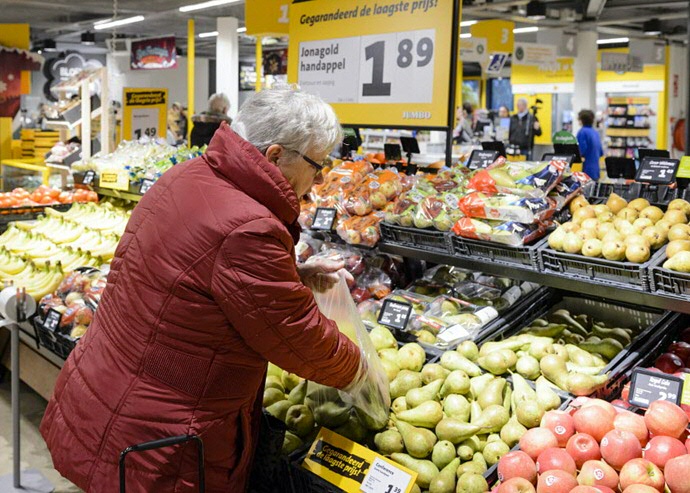Attention customers: our price sensitivity changes while we are grocery shopping

The timing of the moment when a customer spots a deal has an influence on the likelihood that they will buy the product advertised. This is because our price sensitivity changes while we are wandering up and down the aisles, says Koert van Ittersum, Professor of Marketing and Consumer Well-being at the University of Groningen. ‘Regular supermarket customers are least price sensitive at the beginning and towards the end of their shopping trips, and most price sensitive in the middle. It’s important for customers to be aware of this, because they are most open to more expensive purchases during these moments of low price sensitivity’, says Van Ittersum.
For customers who are restricted by a tight and limited budget, price sensitivity varies in a different way, says Van Ittersum. ‘People with low incomes are actually more price sensitive at the beginning and end of their shopping trips, and the least price sensitive halfway through. This is presumably because halfway through their shopping they still have a large part of their budget to spend, and they feel rather rich at that point in time.’
Four lab experiments and a field study

Van Ittersum conducted his research in close cooperation with Daniel Sheehan of the University of Kentucky. They conducted four lab experiments and a field study in a supermarket. The researchers have published their findings in the Journal of Consumer Research.
Consequences for floor plan
The conclusions are not only relevant to consumers, according to Van Ittersum. ‘Manufacturers and retailers can use the results of our research to decide how their products are best arranged and to work out the best timing for their specials. Take for instance healthy products. Consumers often think that healthy products are more expensive. A supermarket with few budget shoppers can increase the sale of healthy products by placing them in the aisles near the store entrance or exit. Supermarkets with relatively budget shoppers, on the contrary, can stimulate the sale of healthy products by placing them in the middle of the store.’
Effective timing of offers
For the effective use of price promotions, the opposite holds. ‘While supermarkets with few budget shoppers can use price promotions more effectively by offering them in the middle of the store, supermarkets popular among budget shoppers can draw attention to special deals more effectively by positioning them near the store entrance or exit.’
More information
- Contact: Koert van Ittersum
- Link to the article: In-Store Spending Dynamics: How Budgets Invert Relative-Spending Patterns
________________________________________________
> More news from the Faculty of Economics and Business
> FEB experts in the media


| Last modified: | 29 February 2024 10.02 a.m. |
More news
-
12 April 2024
Inaugural Lecture Corine Noordhoff: Future ready retail
In her inaugural lecture, Professor of Retail Marketing Corine Noordhoff will provide insights in the cornerstones for survival and adaptation in the retail sector. Noordhoff’s inaugural lecture will take place on Friday 19 April 2024, 16:15 –...
-
09 April 2024
New issue FEB Research Newsletter
We are proud to present the spring 2024 edition of the FEB Research Newsletter.
-
08 April 2024
Nieuwe essayreeks: Duurzaamheidsverslaggeving na de CSRD
De eerste editie is uit van de gratis essayreeks van UGBS over duurzaamheidsverslaggeving sinds de CSRD. Met tips voor ondernemers. Abonneer om op de hoogte te blijven van nieuwe edities.
